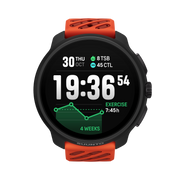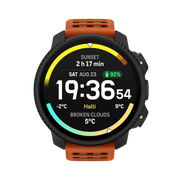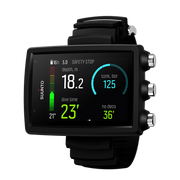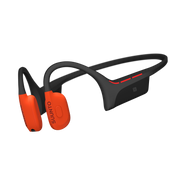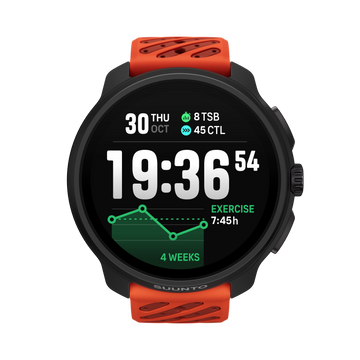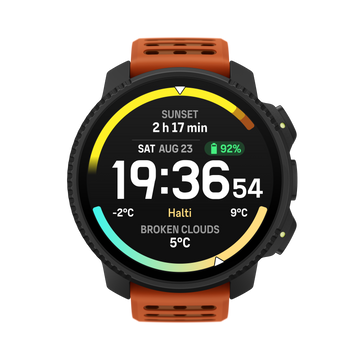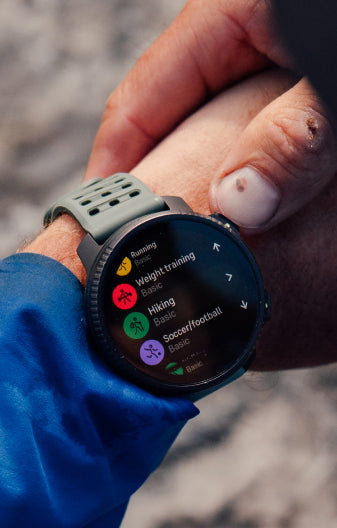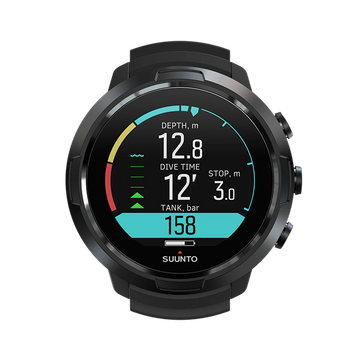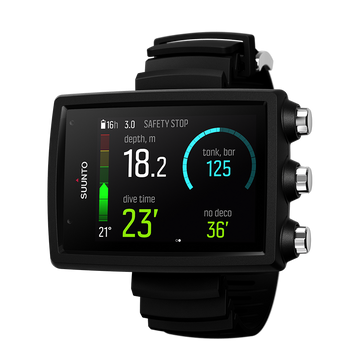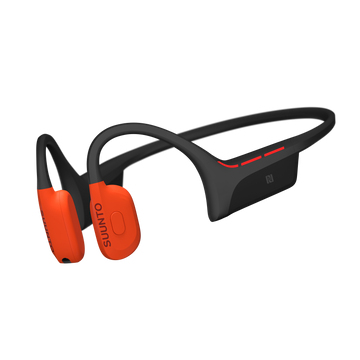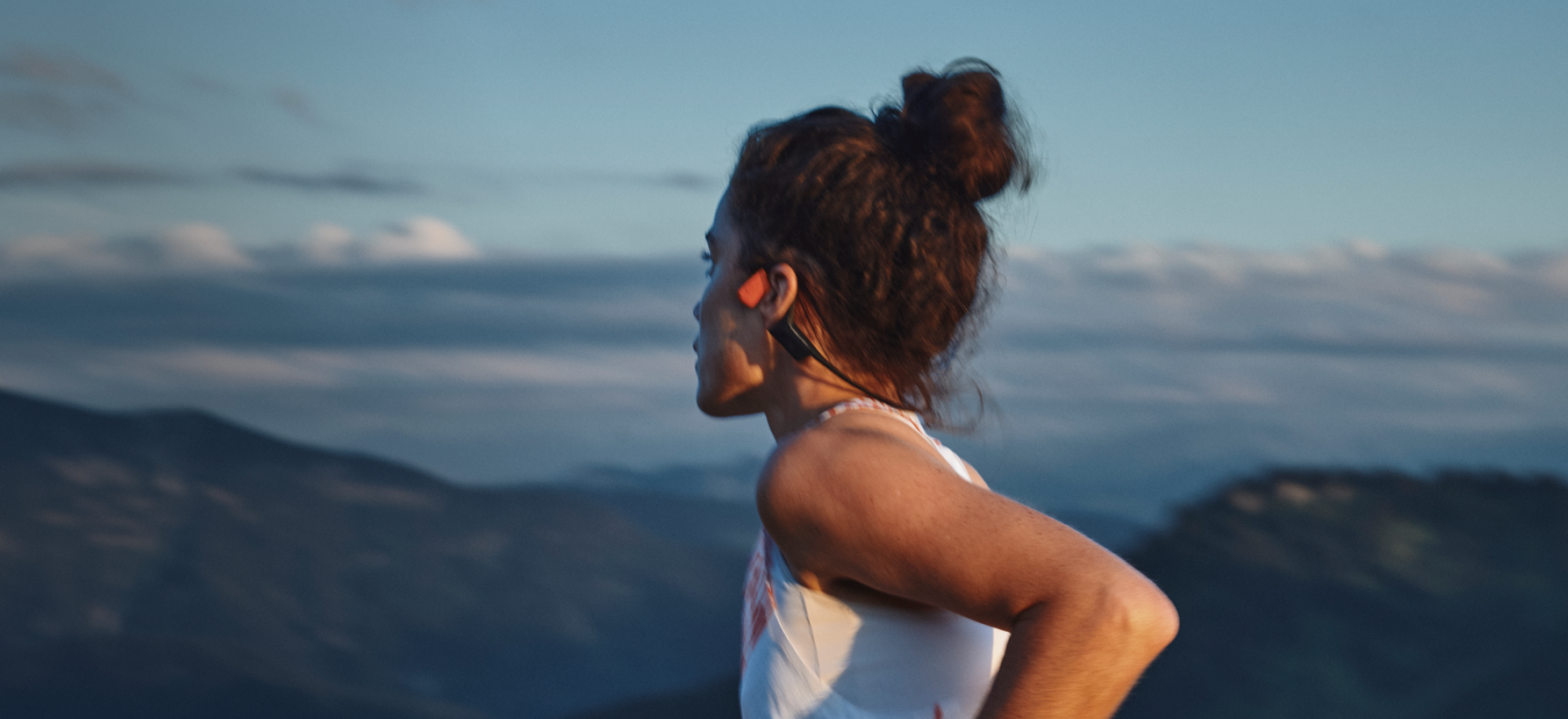

Suunto-blogg
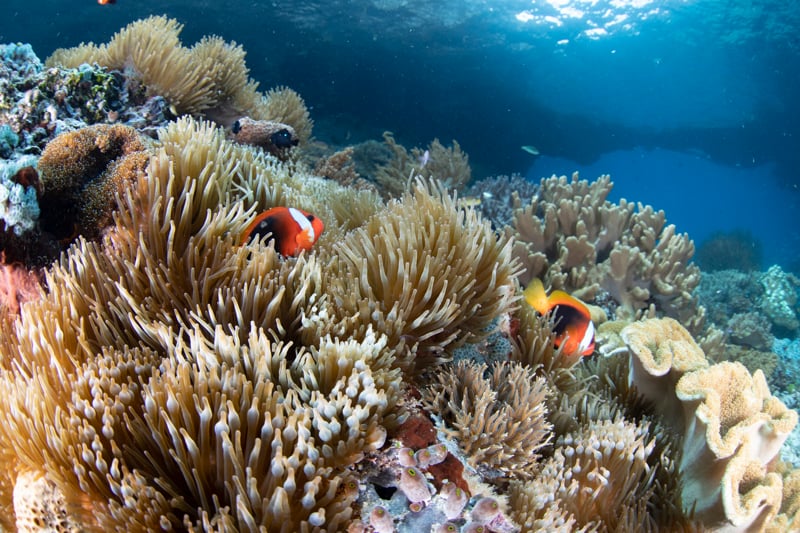
Max Ammer, Raja Ampat and the richest reefs in the world
Janne Kasperi Suhonen ©
Last year Suunto took a group of competition winners out to Indonesia for the Suunto D5 photo shoot to produce inspirational content. We had never explored these waters before and we soon saw the fruits of hard work. It was to say, nothing less than inspiring and the story behind this special location is just as wonderful.
Steve Woods Photography ©
The Best Diving in the World?
A young fisherman stood at the edge of the water on West Papua next to his canoe. Inside the canoe there were two turtles that he had caught on his morning excursion. Max Ammer walked past the fisherman by the canoe and immediately his interests were sparked. After a brief chat and small negotiation, the pair agreed a fair price for the sale of the turtles.
Once the money was exchanged, Max sprang into action and suddenly flipped the first turtle over the side of the canoe to which the fisherman promptly jumped in the shallow water after it. In the splash and confusion Max then took his chance flipped the other turtle off the other side of the canoe back into the ocean and watched it happily swim away. With the fisherman staring in awe at what was in his understanding a ludicrous occurrence, Max simply told the fisherman, “I like turtles”.
That same fisherman was soon to become the first dive guide at the five-star eco resort run by Max Ammer on Kri Island in a unique location where in an extraordinary case, the reefs are getting richer.
Steve Woods Photography ©
The Concept
Max Ammer went to Papua after a long life of nature filled early years, growing up in Nigeria on an animal refugee camp run by his parents. They nursed birds, crocodiles, chimpanzees to name but a few species back to health and released them into the wild if they could. These formative years have certainly affected Max and led him on his quest for protecting nature.
Max learnt to dive while in the special forces in 1982 but it was not an enjoyable experience for him.
“I learnt not how to quit but how not to quit.” Max talks of the key message he took home from his diving course.
Thirty years later and Max arrived in the pristine island paradise on Raja Ampat Islands, off West Papua in 1989 in search of wrecks and little else. He had a tip off whilst living in the Netherlands that led him to pack his bags and head off around the world in search of sunken treasures. The tip was from Max’s landlord who had been based in the Pacific at the end of the war and according to the story, he witnessed the Allied forces bulldozing aircrafts and Jeeps into the water.
At that time his job was building and restoring Harley Davidsons and classic bikes from the war so he was certainly interested. On arrival at the remote island he found the jeeps with ease and began removing the data plates to sell to members of the Keep Them Rolling group of classic car collectors for approximately 250$ a piece.
“I found them. I still have a glove compartment form a WW2 jeep over there now.” Max muses as he sits by the ocean beach front of the Eco resort in Papua.
He found the aircraft wrecks were slightly harder to find. After an initial investigation of the area he thought it best to return with a zodiac, a Bauer compressor and some equipment to dive in and find them. Morotai Island was the location of the Allied forces strategic base where 50,000 soldiers served under Supreme Commander for the West Pacific, General Douglas Macarthur. There were about 500 aircraft take offs every day from the base as he island was a major base with it being just a short step over to the Philippines and Borneo.
In his search for the wrecks around Morotai Island Max formed friendships with the locals. He opened up honest communications and he fell in love with their warmth. He describes their nature as friendly and at some point, he thought he wanted to work with them, he wanted to build something great and he wanted to see change in the future.
Steve Woods Photography ©
The Dive Show
The idea of the eco resort idea came to light as it was the perfect balance of working with the locals and working with people while protecting nature. Max took their ideas to a dive show with intention. He designed an iconic stand never seen at a dive show before and filled it with plants and local artefacts to entice people to the yet unbuilt resort. He decided that if he landed three sets of guests they would go ahead with the project plan; he sold two years’ worth of guests.
“I rushed back to the island and told the guys we have to build this thing the guests are coming!
Sometime later, lost in time, it was ready. I was actually walking out the back door with the build team as the guests walked in the front!” Max remembers fondly.
The locals lived a remote life and a lot of his team previously worked as loggers, fisherman, shark fin fisherman and poachers having had little or no access to education.
Now part of the crew, they have all ceased what they were doing and are serious about protecting the reef. They earn more money, have security for their families and access to education while working on this unique reef system that is getting richer in fish species and corals.
Since the beginning Max and the team have put the protection of the burgeoning ecosystem at the forefront of their priorities. This has proven to be a wise move as the fruits of the work can be seen in the thriving fish counts.
Steve Woods Photography ©
Conservation on Raja Ampat
A group of scientists from Conservation International visited the eco resorts on Raja and conducted studies and counts documenting the numbers of fish and coral species along the house reefs. They counted the largest amount of fish species in the world which led to National Geographic reporting on the resort which of course was fantastic exposure.
Twelve years later, scientist Gerry Allan returned to do another count and found that there had been an increase of 91 species in the same area totalling 374 species of fish on one dive, making it the richest area in the world.
Max puts this down to beginning the protection before the reef had been destroyed unlike many other marine protected zones. They are not wasting energy trying to revive an ecosystem that has already been destroyed, they are building on a top of a flourishing base and these hardy coral polyps seem able endure a larger fluctuation of sea temperatures than other species so are being transported around the word to be implanted and successfully grown in other systems.
“Scientists are looking to see if it will be possible to transplant our corals from our home to other areas where they are not surviving. We are not sure but people are researching this possibility. Perhaps our corals are more evolved, stronger, but I can’t really answer that yet.” Says Max.
The diverse variety of natural schemes in Raja around the two resorts include bay areas and swamps amongst the lush swarms of vegetation. The water is warm and the equatorial location has constant access to nutrient rich waters bringing in a healthy supply of food to support the great wealth of nature that relies on this orchestra of occurrence.
There are of course stresses on the environment, including those caused by running two resorts on the wild and remote island but Max sees it is all about balance in this situation.
“There are always stress on environment. What we tried to do at the resort is plan how we can help educate people for the future.
We also work with the government, but they do not do enough, they should be more involved in our opinion, and we try to work with them and educate them, then hopefully there can be encouraged to be more proactive and initiate change.”
As it stands Raja is able to handle more tourism but the expansion must be on the right terms and make the least footprint.
Regimented planning and organisation will be the key to successful growth including processes such as strict waste management schemes, green energy generation and protection of nature in the area will have a positive influence. Educating guests on their own environmental impacts as visitors is an important part of the eco experience. Beginning with using eco-friendly sunscreen that will encourage better behaviours that they can take home with them and spread the word amongst peers. The resorts are aided in their plight of protection by a constant stream of researchers including overseas students that come and study the area and collaborate with the ground team.
Environmental dangers are changing across Papua, including increased plastic pollution being a serious risk to the natural environment. The ground team are more than aware that they should be considerate and careful and encourage guests and visitors to adopt the same attitudes while sharing knowledge and ideas and working together so they can grow and concentrate on creating a wonderful future for the local area, its inhabitants and beyond.
“We hope in September to welcome five students to conduct their own research and look at different aspects of the issues we are facing here to help towards making things better and better for the future.” Max continues with an excited tone, “we love working with Conservation International and we are blessed to have this opportunity to work alongside them.”
Steve Woods Photography ©
Flying High for the Future
There is one surprising element of this conservation project that is somewhat unexpected, their collection of Bell 47 helicopters hidden inside a huge hanger just behind the beach that houses enough spare parts to build a further three helicopters. Max built the machines himself and the advantage is they are easy to maintain. They are the best auto rotator helicopters that keeps the weight in the tips of the blades allowing them to land and take off if they unfortunately fail. Max Ammer is interested in aviation and they serve as a useful tool in protecting the local area. Illegal loggers, fishermen and general rogue behaviours are easily spotted from above.
The passengers and captain can even see the dive sites from the air, flying over the water they can view corals, the aggregation of fish and whereabout they gather on the dive site. Best of all, they can see the large animals. Max talks of his record sightings, 132 manta rays on one flight and 33 dugongs on another.
“You owe it to yourself to be positive. Negativity is no good, be positive and look at all the things many things you can do at least you did the right thing. If you going to be negative it’s not going to do you any good.” Max Ammer, Raja Ampat Eco Resort and Papua Diving.
Videographer: Janne Kasperi Suhonen www.jannesuhonen.net/
Photographer: Steve Woods stevewoodsphotography.com
The lucky winners of the trip to Raja Ampat were dive instructor Rosie Sheb'a from Australia, student Niko Lekhraj from Singapore, outdoor guide Anders Vestergård from Denmark, designer Xiaomo "Momo" Wang from China and nature activist Lilian Ellevog from Norway.You can see them diving in our D5 images and videos and will also hear some of their comments from the trip during the next few weeks so stay tuned.
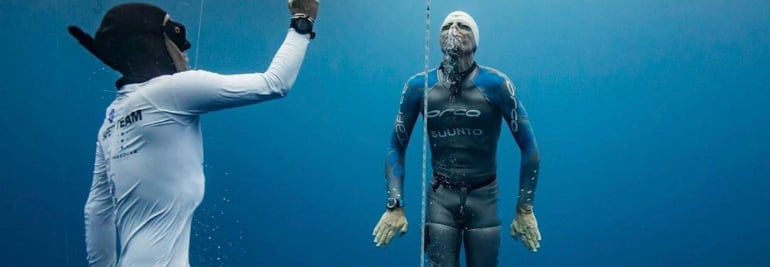
The Lowdown: CMAS 4th Outdoor Freediving World Championships 2019
On the white sun drenched shores of Roatan Island the gentle sound of the Caribbean Sea’s crystal clear water tentatively exploring the sand is lost behind the dissonance of diving activity coming from a dive platform located not far from the beach.
Divers are descending, safety protocols are being fine tuned, Alex St-Jean the official event photographer is testing his underwater camera equipment while the final training rehearsals are being observed in preparation for the CMAS World Championships that fin-kick off with an almighty duck dive on 6thAugust 2019 lasting five days. The event has been organized by Esteban Darhanpé at the Roatan Freediving School and Training Centre.
Chilling in the warm waters of the Caribbean Sea, Roatan Island is situated alongside a part of the 1000km of Mesoamerica Barrier Reef, the second largest reef system in the world.
The best of the best from around the globe are gathered to compete at the event. They compete not only to win but to be to a part of the freediving community.
A common misapprehension of freediving is that it is all about gaining the depth and in competitions this may be the case. Competition diving and its many disciplines are only one aspect of the sport. For most freedivers, the sport is just about hanging out with friends and exploring the underwater world.
“To the observer, freediving is all about serenity and calmness – a peaceful interaction with the underwater world. It is exactly all these things, which is why competition freediving presents such a unique challenge.” says Will Trubridge, Suunto Ambassador and World Champion.
“The conditions of a competition are slightly different to a world record attempt. In a competition you have an official pre-set time and there's a lot more people around – spectators and media. It's not as controllable as with a world record attempt,” says Will.
William Trubridge captured by photographer and freediver Alex St-Jean ©
Organizations
CMAS- The World Underwater Federation/Confédération Mondiale des Activités Subaquatiques founded in 1959 and is an international federation that organises underwater activities and events and is amongst the leaders in the scientific and technical research and development. It also acts as a training standards agency in snorkel and scuba training.
AIDA- International Association for the development of Apnea was created in 1992 after the film release for Big Blue. The rise in training freedivers and record breakers was developing at a vast rate and the AIDA was founded to keep track on the growing interests. The largest organization world wide of freediving event organizers, it also actively participates in scientific and technical research and development to help the world see freediving not as a thrill seekers sport, AIDA wants the recognition that “freediving is safe, fun, challenging and a fantastic blend of inner peace, concentration, technique, training, friends and team work”.
Disciplines
CNF- constant weight no fins is often talked about as being the purest form of freediving unassisted
CWT- Constant Weight with Fins discipline means the diver can wear fins, however they are only allowed to touch the rope to stop their descent and start their ascent. This discipline tends to give the deepest performances.
CWB- Constant Weight with Bi Fins. More monofins than you can shake a pair of bi fins at.
FIM- Free Immersion is a more relaxed dive where the diver can use the rope to pull themselves along using the rope, the diver is not allowed to wear fins on the dive.
Competition Terms
Safety Teams/Safety Diver- the Dive Safety Team is headed up by Italian Freediver Marco Cosentino and is currently holding the position of Chief of AIDA Safety Committee. He has a team of twelve safety divers there for support including Suunto Ambassador Sofia Gomez’s coach, freediver Johnathan Sunnex aka Johnny Deep.
Announced Dive Time- the official target time the diver will take to complete the dive, must be announced pre-dive. “You announce your dive on that day. If something goes wrong, then you don't have a second chance. It creates more of an element of chance. There is also a lot of sleuthing and spying to find out what other freedivers have done in their training to gauge how they're performing, and using that information to make pronouncements.” Says William Trubridge.
Official TOP- Time of Performance, as during the competition the organisers will be sticking to strict scheduling and the divers are assigned a time the dive must commence so all pre-dive preparation must be completed by the official TOP.
Duck Dive- the way a free diver ‘enters’ the water is by this type of dive as it gets the diver in a good position for descending and helps them along to few meters deep very quickly.
Freefall- once the diver reaches the point of negative buoyancy on their descent and begins to sink in a state of complete relaxation without finning down. This year we have spotted the athletes with strings tied around their thighs, Will Trubridge uses his to slide his thumbs in place so his arms stay positioned during freefall in order to conserve every bit of energy. It is this part of the dive that can induce the most pleasant feelings. Many freedivers feel euphoric as they enter an almost trance-like state.
Tag- a marker the diver must grab and bring back up to the surface when competing in depth competitions.
PB- personal best is the athletes, longest or deepest dive they have achieved. Can also be measured by distance.
Surface Protocol- the sequence a freediver must completion upon reaching the surface after a dive in a competition to convince the judges that the diver is lucid and not unconscious. The diver must face the judge’s direction remove googles and nose clip, give the OK signal and say in English “I am OK”/I’m OK” with a 15 second time limit.
Hypoxic- where the body is in a state of inadequate oxygen at tissue level. If the diver doesn’t get to the surface with enough oxygen to be lucid enough to complete the surface protocol they will be disqualified.
Cards- white, yellow or red. The judges will show a card at the end of each competition dive to signal whether the diver has had a fine performance with no penalties, yellow means the dive was completed with penalties and red signals disqualification from the dive.
World Championships Schedule
AUGUST 6th OPENING CEREMONY
Much like the opening ceremony of the Olympics we hope to see the atheletes parading around Roatan wielding flags, looking strong and generally building the hype, however it may be more of a technical meeting!
AUGUST 7th CNF COMPETITION DAY
Suunto Ambassador William Trubridge holds the world record in this natural discipline. Will set a new world record in freediving by diving to 101m with no fins in Dean's Blue Hole in the Bahamas. The new world record was set mere three days after he established an astounding new world record dive of one hectometre. Will's record-setting and mind-boggling constant no fins dive to 101 meters took 4 minutes and :08 seconds to complete.
Watch it here:
AUGUST 8th CWT COMPETITION DAY
Constant weight APNEA. This discipline means the diver can wear fins, however they are only allowed to touch the rope to stop their descent and start their ascent.
AUGUST 9th REST DAY
Rest day for re-ups on oxygen and rest.
AUGUST 10th CWB COMPETITION DAY
More monofins than you can shake a pair of bi fins at.
AUGUST 11th FIM COMPETITION DAY / AWARD CEREMONY / CLOSING PARTY
The winners get to take home a magnificent Suunto D5 dive computer and also collect a cash prize.
Sofía Gómez Uribe taken by freediver Johnny Sunnex @johnnydeep110 ©
Follow on Instagram @Suunto Dive to keep up with Sofía Gomez Uribe as she takes over for all latest news from the dvie platform.
Click here to see the official Facebook page for the competition.

5 inspiring coral reef restoration projects
Plucky divers, scientists and ocean conservationists are doing all they can to save coral reefs from the effects of the climate crisis, overfishing and pollution. Here are five inspiring restoration projects to give you hope.
Diving rich, rainbow colored coral reefs is every diver’s dream. We travel the planet to experience them, leaving us in awe of how staggeringly beautiful they are. Imagining our oceans without them is simply heartbreaking.
Yet, mass coral bleaching events – due to a rise in global surface temperature – could cause all 29 reef containing World Heritage sites to cease to exist by the end of the century. The stakes have never been higher.
To stop this from happening, divers, scientists and ocean conservationists are teaming up to find solutions. We look at five inspiring initiatives to save the coral, and also what you can do to help.
Reef Rescuers, Cousin Island, Seychelles
In a way, every diver should identify as a reef rescuer, and do what he or she can, even if only make donations, to support one of these initiatives. Starting in 2010, this huge and impressive restoration project has raised 40,000 corals in underwater nurseries, with 24,000 of these being successfully transplanted onto reefs, covering an area of a football field. The project utilised the coral gardening technique of retrieving fragments of healthy coral, growing it in protected nurseries and then transplanting it onto degraded reef to help rejuvenate it. Based on its learning, the project created a Coral Reef Restoration Toolkit for other initiatives to benefit from.
Secore Coral, Yucatan Peninsula, Mexico
Starting in 2015, this pilot project researched and tested new techniques to use coral grown in land-based or ocean nurseries for restoration, waiting until they are old enough to plant out on reefs where they are then monitored. This inspiring documentary below shows what’s possible.
Pur Coral, Indonesia
Coral reefs across the world need all the help they can get, including financial support from the corporate sector for restoration projects. French dermo-cosmetics brand EAU THERMALE AVÈNE partnered with Pur Projet to create Pur Coral, a project to preserve and regenerate marine ecosystems in Pejarakan, Bali. The corals had been destroyed mostly by cyanide and dynamite fishing, which are now banned there. Since its start in 2016, the project immersed 24 artificial reef structures underwater, then planted 1855 corals, from more than 15 species, on them. For several years Avène has engaged in an eco-responsible initiative called "Skin Protect Ocean Respect" to raise awareness about the impact of sun protection on the environment, and particularly on the marine life and corals. Avène has also been a leader in redesigning its sunscreen product range, minimizing the impact on the environment without compromising on optimal UVB-UVA protection for the skin.
RangerBot, Great Barrier Reef, Australia
Like a Swiss army knife, a state-of-the-art robot reef protector developed by researchers at Queensland University of Technology in Australia – RangerBot – has a number of functions, all designed to protect one of the wonders of the world, the Great Barrier Reef. It’s first function is to search and destroy; its incredible cameras identify invasive Crown-of-Thorns Starfish and injects them with a lethal dose of poison. It also monitors the health of the coral and water quality. It can also map vast areas underwater at scales not previously possible.
World’s largest 3D printed reef, MARS, Summer Island, Maldives
The Modular Artificial Reef Structure (MARS) is an ongoing project developed by industrial designer Alex Goad. It utilises 3D printing to provide a rigid skeleton on which corals can be implanted and grown. In August 2018, they submerged the first reef off the coast of Summer Island, in an area where there has never been a coral reef, and where locals have been growing corals. Alex says the ease, affordability, flexibility of 3D printing can play an amazing role in preserving coral around the world.
6 ways you can make a small difference
Conscious travel
Air and vehicle travel are major contributors to the rising greenhouse emissions driving the climate crisis. Consider trying to reduce both. For example, use public transport or ride a bicycle whenever you can. And when you do fly, offset the carbon emissions from your flight by using a carbon calculator, and compensating a green cause of your choice.
Hands off
When you’re out diving, don’t touch coral or any marine animals. Keep a respectful distance. Don’t pursue animals to get that trophy photo. And don’t collect shells and so forth as souvenirs – remember that hundreds of people dive the same site, and if every diver took a souvenir it would create a big problem.
Use eco-friendly sunscreen
Use sunscreens based on eco-designed, biodegradable formulas. Avoid products that have the following ingredients in them: Octocrylène, Benzophenone, Methoxycinnamate. Take a look at Avène’s sunscreen range – they are brand of choice for divers at Suunto head office.
Be a tidy diver
Single use plastics really are an abomination. Divers should lead the way and quit using them. Be sure to clean up any plastic trash after your dive when you’re back on land.
Start “strawkling”
Strawkling is a new recreation that combines snorkeling and collecting litter. Take a net-cloth bag on your next dive, and collect any plastic litter you find. Imagine if we all did this!
Change your business practices
If you own, manage or work for an organisation in the global dive community, join Suunto in getting onboard with Mission 2020 and changing your business practices so they help protect and preserve our oceans for the future.
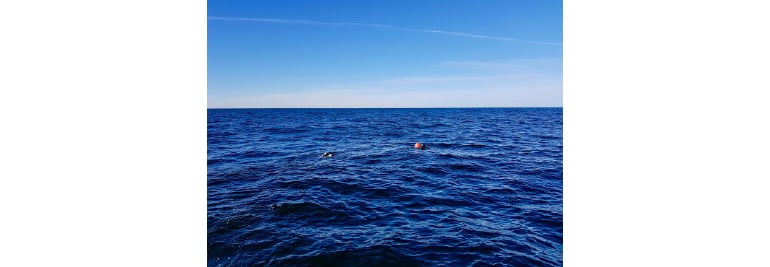
The Baltic Unveils Treasured Secrets with The Help of Suunto Divers
Bow of Vrouw Maria with divers. In the early stages of the work, investigations of Vrouw Maria were also illustrated by artwork. Drawing by Tiina Miettinen, Finnish Heritage Agency.
Suunto’s Dive Engineer Pasi Lammi and his dive team, the Badewanne, were invited by the National Board of Antiquities in Finland to join the expedition to create a 3D model of the underwater site. This was not the first time the Bedawanne had experienced the wreck, they were amongst a team of divers in 2007 that got to explore her pristinely preserved wooden structure. Diving access on previous archaeological expeditions have been limited on the wreck due to the increased risk of disturbing the sea floor and concealing the wreck further or risking damage to the delicate structure.
The atmosphere after the expedition dive in 2007. Roope Flinkman (left), Pasi Raasakka, Petri Puromies, Jussi Kaasinen, and Minna Koivikko. Photo by Ulla Klemelä, Finnish Heritage Agency.
Down with the ship
The Vrouw Maria is a Dutch two mast merchant ship that set sail from Amsterdam on 5th September 1771 destined for St Petersburg, Russia but it never arrived in port. During late September the Vrouw Maria entered into the Danish Straights and the cargo was last recorded at the Elsevier (Øresund) toll before she sank. It was reported that after some navigational errors through the stormy Archipelago Sea the ship lost its course and ran aground. Obtaining only slight damage to the hull, the vessel fell foul of another grounding shortly afterwards this time losing the rudder when a large wave freed the ship from the sea bed and the crew could not control the water coming.
On October 4th 1771 the crew finally abandoned ship and made it to safely to nearby rocks after saving only a portion of cargo during the short window of opportunity they had as the water flooded in. There was some effort to stabilize the ship but the pumps were clogged with coffee beans leaked from cargo in the hold and finally, on 9th October 1771 the Vrouw Maria sank beneath the waves taking most of the cargo and revered luxuries down with ship.
Onboard the Vrouw Maria when it sank were bags of coffee, sugar and fabric dyes. The most precious items in the hold were artworks purchased by Catherine the Great at auction that year in Amsterdam on their way to her residence. Other luxuries including mirrors, ivory eggs, and flower bulbs headed for Russian nobility that still lay in the sea bed today. Little was saved during the rescue and even less has been salvaged off the wreck since it was discovered.
The positioning of the wreck on the sea bed had remained a mystery and regard was lost in the wreck for over 200 years. However, interests peaked in the 70’s when Dr Christian Ahlström discovered documentation of the incident in the Finnish National Archives that he then published. His findings in 1979 sparked an exciting search mission that was to last twenty more years.
A wreck was discovered in 1999 by the Pro Vrouw Maria society using a side scanner under Rauno Koivusaari’s leadership, and was positively identified as the Vrouw Maria.
Now twenty years later on the anniversary Suunto’s very own Dive Engineer Pasi Lammi has been invited to dive the wreck and take part in the 3D modelling project. Pasi and his dive team, the Badewanne Team are committed to working alongside the Finnish Board of Antiquities, Military Museum of Finland and collaborators from around the world in a bid to preserve the Baltic history.
Pasi’s office location
2012 Virtual Simulation
During 2012, at an exhibition called ‘Lost at sea, rediscovered’ there was a virtual simulation of the wreck that visitors of the Finnish National Maritime Museum could visit. This impressive footage was honoured with an award at the Europa Nostra Awards 2015 competition of the European Union.
“Through a simulation constructed by Aalto University and the Finnish Heritage Agency, the general audience could examine in detail the treasure ship, which in reality is difficult to access. At the time, the Vrouw Maria simulation was a totally novel way of visualising the underwater world and making it accessible.”
The virtual simulation of the Vrouw Maria wreck received a special nomination in the research and digitalisation class of the Europa Nostra Awards 2015 competition of the European Union. Image by the Finnish Heritage Agency.
The Revisit - 3D model of Vrouw Maria
Now with team of volunteer divers who are revisiting the wreck and taking the latest in photo 3D modelling technology underwater to create an ultra-realistic interactive map of the wreck site people will be able to appreciate the ship in all its glory from above the water. The divers use a mix of videos, photos and photogrammetry to create the final product that will illustrate how far technology has come since the 2012 simulation and give a more in depth look at the wreck.
“Today was the first day and our initial mission was set up for the modelling to begin. We experimented moving the camera into different locations to get the best views of the wreck and setting up attachments to secure cameras. After this the team and I then test documented two locations so we could present the findings for the Finnish National Heritage agency. The project has just begun and the results will be released soon, and we certainly are excited to see the results.” Pasi comments.
Pasi shared his dive profile from his Eon Steel paired with his Suunto App we can re live his dive with him.
The completed project will go on display at the new Stockholm Treasures of the Baltic that is scheduled to open its doors in 2020.
Before the final model opens at the museum you will be able to view the first version of the project on the twentieth anniversary of the discovery of Vrouw Maria, 28th June 2019, on the online 3D modelling platform, Sketchfab.com.
About Pasi Lammi
Pasi Lammi lives in the city of Espoo, Finland. He started diving in 2007 and had his first dives on a rebreather in 2009, after which he made the switch to JJ-CCR in 2014. His diving certifications include IANTD, NSS-CDS, PADI, NAUI and CMAS accolades and instructor level for both NAUI & CMAS training agencies where he teaches diving both in Finland and Estonia.
He is an active instructor and teaches both recreational level divers and technical but his heart lies in the technical side of diving. Pasi is also a very active dive club member and joins in activities with a number of local dive clubs.
When he is not training you will find him diving wrecks in Baltic Sea or mines in the Nordic countries. For Pasi diving is not only about seeking experiences of his own but also working as part of a team and sharing the experiences with others by the means of documentation of historical interests. He enjoys taking underwater images, videos and now working on 3D modelling projects has brought a whole joy to his diving. He takes great pleasure in contributing to the discoveries of new historical facts and building up the bigger picture of his cultural heritage.
Filling cylinders on location in preparation to explore the Vrouw Maria on the anniversary dive, 2019.

Underwater videographer Patrick Dykstra is taking over @suuntodive Instagram for a week
Underwater videographer Patrick Dykstra is taking over @suuntodive Instagram (Image by Chris Michel).
Who are you and where you from?
My name is Patrick Dykstra and I'm from Denver, Colorado, USA, but have been based in Dubai for the past 10 years.
Where do you dive?
I dive anywhere that has whales and other megafauna. The more remote, the better!
What inspires you in the underwater world?
There is so much that we don't know about the animals that inhabit our ocean. I'm inspired by the pursuit of the unknown and driven to help others learn more about our oceans, and the threats they are facing.
How would you describe your photography style?
I actually am doing a lot more videography these days, but I do still love taking still images now and then. That said, I don't think I have a particular style.
Is there a story you wish to tell with your images?
I hope to bring the mega fauna of our oceans to people's attention. In Dominica, we know most of the sperm whales by name as they are individuals. The whales have calves that they struggle to raise, they need find enough food to eat daily and sustain life while avoiding getting entangled in fishing gear. Introducing them to people as their individual self is important and we hope to inspire people to conserve their habit and respect their home.
What have you been working on recently?
I filmed for the BBC's Blue Planet II ending in 2018 (for which I won a BAFTA), then for National Geographic's Hostile Planet and BBC's Wild Shetland - Scotland's Wild Frontier.
Next year sees a big change as I move in front of the camera to host a multi-part series on Animal Planet coming out in 2020 that explores new discoveries in the world's oceans which is very exciting.
Where can we follow your adventures?
Follow me here:
Website: www.pictureadventure.com
Instagram: @pictureadventure1
FB: Facebook.com/PictureAdventureExpeditions
FOLLOW @SUUNTODIVE INSTAGRAM TO SEE PATRICK'S WORK AND MORE!
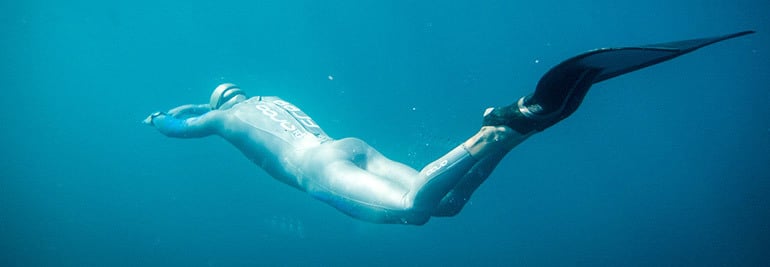
How to swim like a dolphin
Freediving champion and aquaman William Trubridge recently became the first person in the world to swim underwater across one of the most unpredictable channels in the world. He shares his knowledge on mastering the powerful dolphin kick.
Watching Suunto ambassador and freediver William Trubridge swim underwater like a dolphin across New Zealand’s wild Cook Strait, it’s easy to believe he possesses some sort of preternatural ability. There are, after all, few people on the planet who can swim 32 km in that manner for nine hours and 15 minutes.
In March this year, Trubridge achieved a world first: he swam under the surface of the strait before surfacing, and diving under again, all the way across, using the dolphin kick to propel him. A channel crossing of this kind had never been done before.
He did it to raise awareness about the plight of New Zealand's endangered Maui and Hector's dolphins. During his swim, his Suunto D6i Novo dive computer recorded 943 dives. Watch the short clip below below to see him in action.
Mastering the dolphin kick didn’t come easily to Trubridge. He’s had to work at it. “When I first started free diving, I struggled with the movement, and it’s probably because I never swam butterfly at high school,” he says. “It’s not a natural movement for me. It requires a lot of flexibility in your whole back and I didn’t have that at first. I still don’t have it to the same degree as some other free divers.”
He has patiently practiced the technique over a number of years. All that training has paid off. Who better to ask about how to develop a powerful dolphin kick?
Trubridge did his epic swim to bring attention to New Zealand's dolphins and to pressure its Government to protect them.
Why master the dolphin kick?
Simple answer: it feels awesome. “You can really fly through the water at a good speed for a human being,” Trubridge says. “It’s fun to play in waves. You can swim towards a wave as it’s about to break and jump out the back of it like dolphins do. Or you can swim down to 10 m, turn around and swim back up as fast as you can and actually breach clear out of the water because of your speed. It’s a lot of fun to play around with a monofin.”
It’s also an important stroke for freediving, especially for the Constant Weight discipline. Using a monofin and a dolphin kick is the most efficient propulsion, and is best the way to dive the deepest and longest.
How is it done?
It’s the same stroke as butterfly swimming, however it’s done underwater. A monofin or flippers are used in freediving to gain a bigger surface area for propulsion. “The movement is generated by an oscillation of the pelvis, forwards and backwards, controlled by your lower back, and abdominal muscles,” Trubridge says. “It starts a wave that’s sent down your legs into the fin. In order to transmit that wave efficiently you need to keep your legs straight, using your quadriceps, hamstrings and calves. Your upper body, ideally, stays pretty stationary. You can have your arms out in front of you which is a lot more streamlined, or by your sides which is more relaxed.”
How to develop the underwater dolphin kick?
Technique before power
One common mistake, Trubridge says, is to start out practicing the dolphin kick with a monofin. Because the monofin is so powerful it compensates for bad technique. “You can bend your knees, and move inefficiently, and still get good propulsion with a monofin,” Trubridge says. “My advice is to always start with something that doesn’t have the same surface area, like really small flippers, and practice dolphin kick with those, which will be a lot more difficult.” Alternatively, try without flippers.
The practice: Underwater, extend your arms and try to dolphin kick and get good speed. Don’t be put off if you don’t move forward at all; it takes time to develop the technique.
Vertical dolphin
Position yourself vertically in deep water with just your head and shoulders out of the water. Extend your arms above your head. Now, try the dolphin kick, keeping yourself as high above water as possible while staying in the same spot. “It becomes tiring very quickly,” Trubridge says. “It trains the muscles you need in your core and legs, and after a while you will find yourself slipping down into the water.”
Land-based exercises
Any exercise that improves core and leg strength will help. However, Trubridge says specificity of training is important. “Squats, crunches, those sorts of things, will target those muscles, but I prefer to target them in a way that is more specific to the way they are being used in the stroke,” he says.
Hanging bar exercises
Swinging: Find a hanging bar, and hang from your hands, with your palms pointed away from you. Using your core muscles, swing your legs back and forward, keeping them as straight as possible. Don’t use momentum to swing, but rather the abdominal muscles.
Pike pull up: From the hanging bar, do a pull up with your legs in the pike position, or in front of you at a right angle to your upper body.
Monofin or flippers?
The monofin is the best for deep dives, maximum speed and efficient movement. The downside is they are hard to wear for long periods of time. They have to be strapped to the feet very tightly, which can cause blisters and cramps.
Flippers are better for relaxation, recreation – spearfishing and snorkelling, for example – and for training. They offer more versatility.
